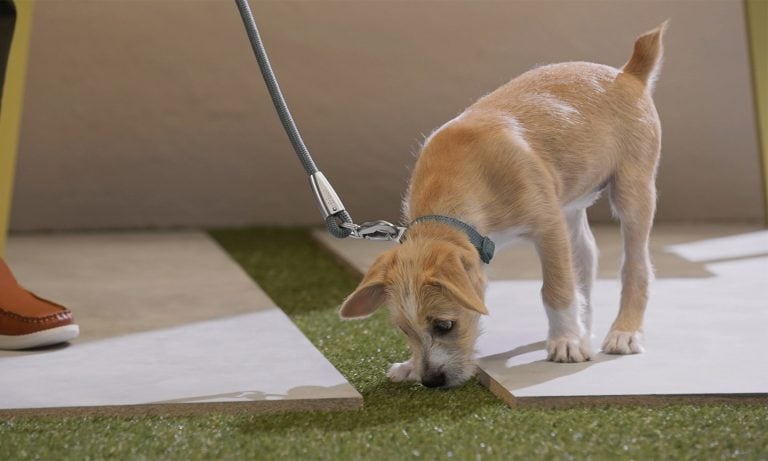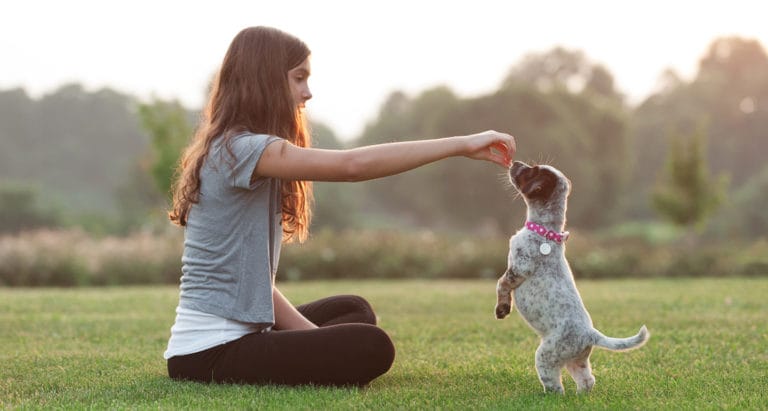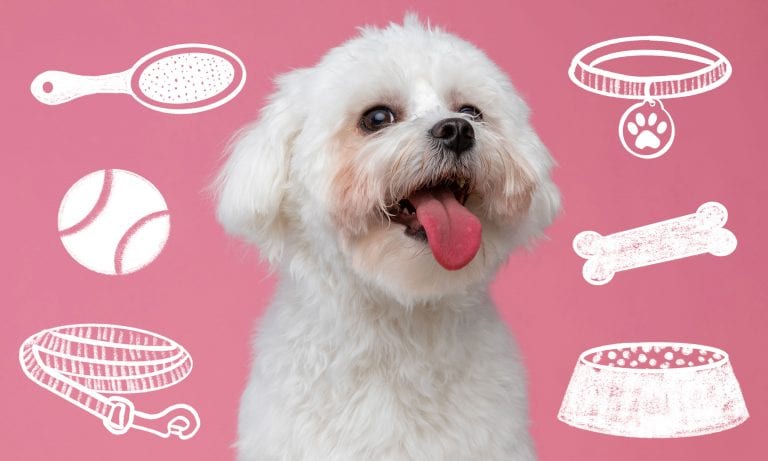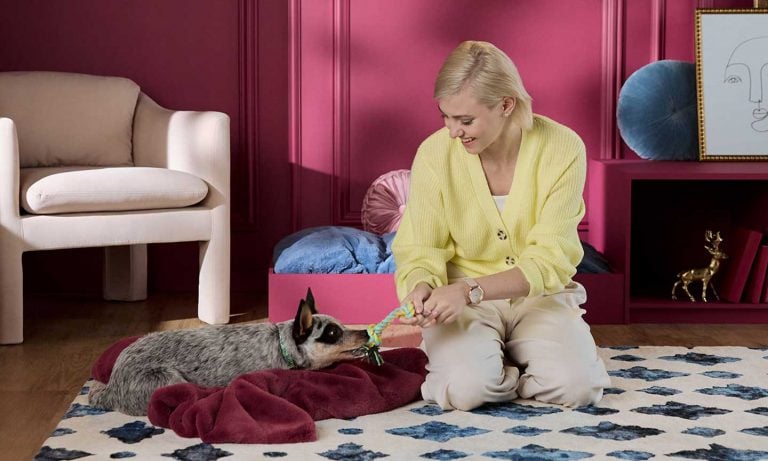There’s no denying the adorableness of puppies (they’re just so small!). But their change in size—while it might seem unbelievable when they’re just 8 or 10 weeks old—is inevitable.
That teeny tiny little fur ball can quickly transform into a 70-pound love bug. And while it’s fun to clock the changes, monitoring their growth and development is of the utmost of importance, as it can affect their long-term health.
So how do you do it properly? And when is a dog’s growth considered “finished”?
Below, we’ll answer those questions and share some tips on how to best care for a growing puppy. (Hint: Those 2,000 puppy pictures in your camera roll can be put to good use!)
In This Guide:
When Do Dogs Stop Growing?
This ultimately comes down to a dog’s breed, says Pam Nichols, DVM, owner of Animal Care Daybreak and Wildcat Equine in South Jordan, Utah, and past president of the American Animal Hospital Association.
“In general, the smaller the dog, the quicker they are fully grown,” she explains. “When it comes to larger dogs, it can take two years for a breed like the Great Dane to be completely skeletally mature.”
Dogs have growth plates on the end of certain bones. These plates are responsible for triggering hormones to promote healthy bone growth. When a dog is done growing, that means their growth plates are all closed. Because of this, spaying and neutering can also affect a pup’s size.
“Early spay and neuter tends to make dogs bigger, taller—it doesn't change the speed with which they mature,” Dr. Nichols says. “But a male dog that is neutered very young will grow to be very tall, because growth plates require some testosterone to close.”
Small dogs
6–12 months
Medium dogs
12 months
Large dogs
18 months
Giant dogs
Up to 24 months
When Do Small Dogs Stop Growing?
Smaller dog breeds are the fastest to finish growing. A puppy whose parents are both under 20 pounds—think breeds like Chihuahua or Pug—is often completely skeletally mature by 12 months or less. They can be fully grown as quickly as six months old.
When Do Large Dogs Stop Growing?
Larger dogs, especially extra-large dogs like an Irish Wolfhound, can take up to two years to be fully grown. So if your puppy falls into a large dog breed group, don’t expect them to stay little for long.
“With puppies—especially large breed dogs that are rapidly growing and get really big, really fast—little changes can happen in two or three days,” Dr. Nichols says.
When Do Mixed-Breed Dogs Stop Growing?
It depends on whether you think your pup belongs in a large mixed breed group or a small mixed breed group, Dr. Nichols says, because “breed is the No. 1 factor in telling when they're going to be fully mature.”
Most breeds are considered fully grown sometime after 12 months.
How To Know When a Dog Is Fully Grown
Dr. Nichols stresses that it’s not always a black-and-white process when predicting how long it’ll take for your puppy to be fully grown. An X-ray is the only way to be “1,000% positive that you know your dog is done growing,” she says.
But paying attention to your dog’s weight can be a good clue. You might notice your pup looks nice and plump, and then they’ll appear much thinner in a short amount of time—that means they are still growing.
Watching their weight is a way to predict when your pup is fully grown, Dr. Nichols says, “and when they start to look chubby and stay chubby, they're generally done growing.”
Caring for a Growing Puppy
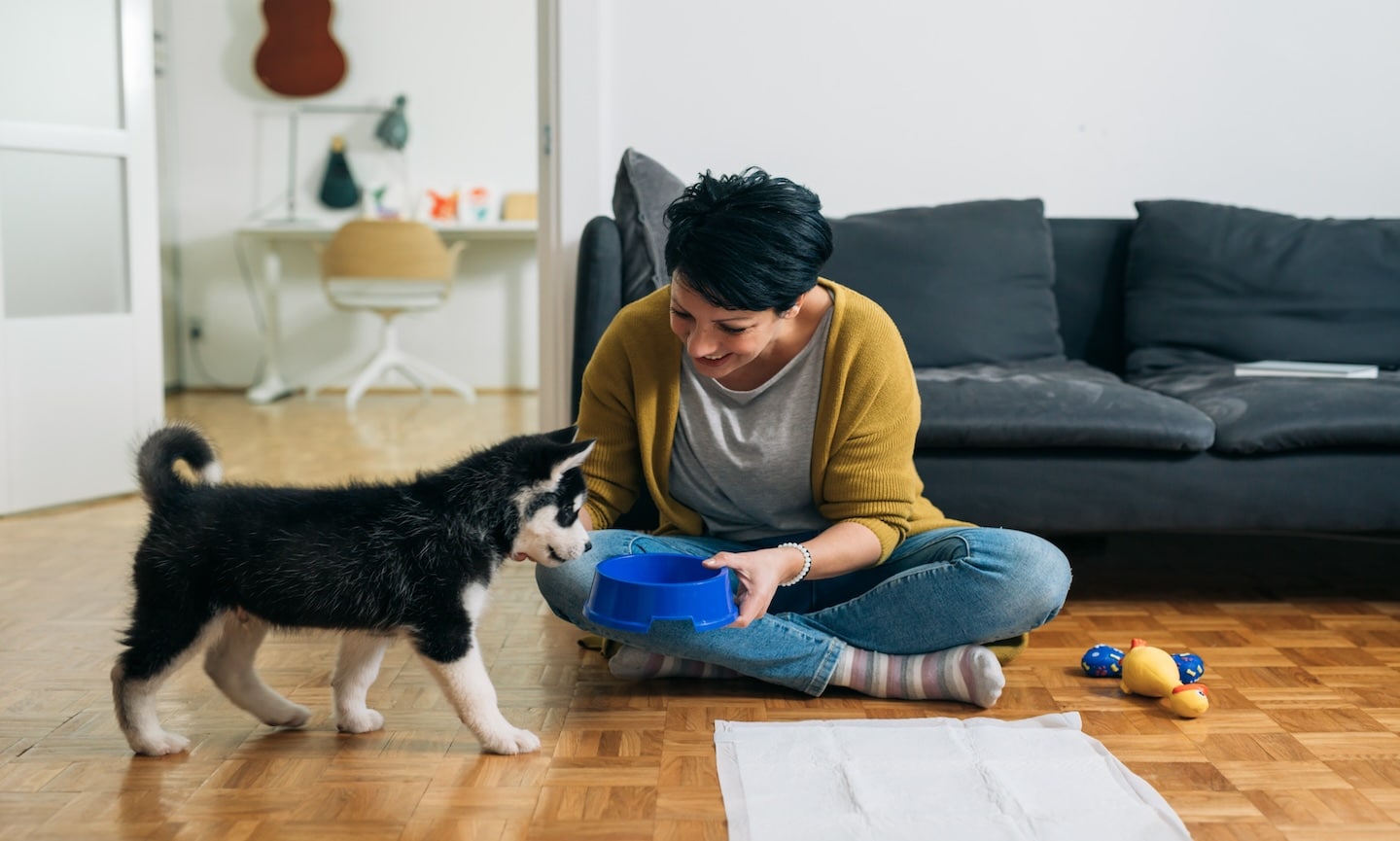
Adobe Stock/cherryandbees
When your puppy is growing, vigilance is key to keeping them healthy.
Watch Your Pup’s Weight
Speaking of weight, Dr. Nichols says this is one of the most important things to pay attention to when caring for a growing puppy.
“If you can’t see their ribs and a waist when they’re young, they’re probably overweight,” she says. “And once they stop growing, it is almost impossible to get the weight off of them.”
Keeping your pup lean when they’re young can affect how long your dog lives. If you think your puppy is overweight, Dr. Nichols recommends taking them off puppy-labeled food, which is more concentrated than adult-labeled food.
“They get more calories in a bite of food with puppy food than they would for adult dog food,” she explains. “So, unless you have a puppy who's a super picky eater, put them on adult dog food.”
Make Note of Potential Problems
Another tip for pet parents with a growing puppy? Dr. Nichols recommends taking lots of pictures of your puppy as they grow—which you’re likely already doing!—and see if you can spot any sudden, possibly concerning changes.
She adds that vets like to look at things like the rolls around their hips when they’re sitting down and how straight their front legs are.
“I'll give you an example: a Labrador Retriever or Great Dane or any dog that is going to be over 50 pounds fully grown—let's say you accidentally slam the door and it whacks their forearm,” Dr. Nichols says. “Three days after that whack, there can be a growth plate abnormality that causes that leg or that foot to start to turn out instead of their toes pointing straight forward. If you notice the toes starting to turn out or the wrists starting to deviate in or vice versa, they need to be seen immediately [by a veterinarian].”
Pay close attention to issues like this or a wobbly gait. “Bring it to the attention of your vet, and make sure that you address it when they're young, because if you wait until they're fully grown, it can be too late,” she says.
Expert input by Dr. Pam Nichols, DVM, owner of Animal Care Daybreak and Wildcat Equine in South Jordan, Utah, and past president of the American Animal Hospital Association.
This content was reviewed by Chewy vets.
Learn more about caring for growing puppies
Share:

